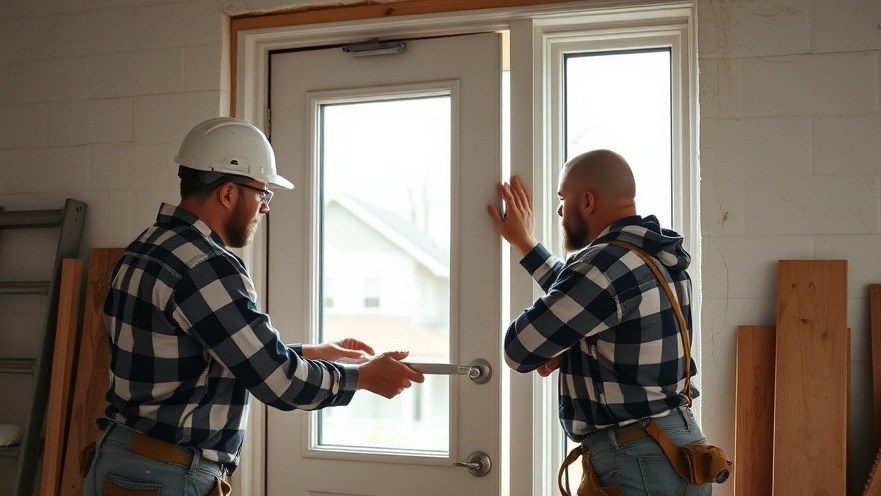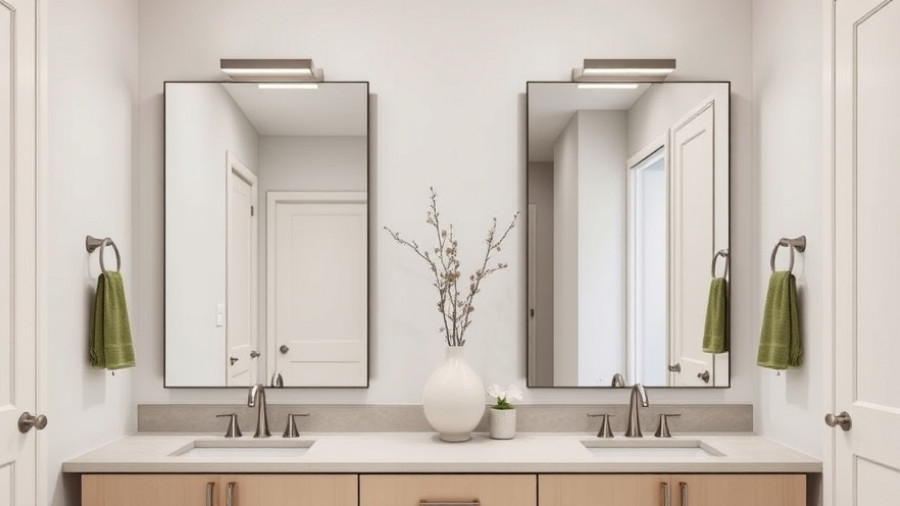
Enhance Your Entryway: The Benefits of Adding a Window to Your Door
The entryway is the first impression of your home, and adding a window to your door can transform a plain façade into an inviting entry. This simple upgrade not only enhances appearance but also improves natural light flow into your home. According to expert Tom from This Old House, the right addition of a sash can beautifully match existing windows in your home, allowing for a cohesive design.
The Process: A Guide to Adding a Door Window
As shown in the video, the process begins with removing the door and measuring carefully to cut an opening the proper size for the window sash. This involves some technical skills, but with the right tools and instructions, it’s manageable even for novices. Starting with plastic cutting blades ensures a clean cut without damage to the metal door.
Once the opening is made, adding insulation with a polyisocyanurate foam provides an excellent R-value, improving energy efficiency. The window goes in securely with a bead of sealant around the gasket to prevent drafts, and finishing touches like the appropriate trim can complete the look.
Why DIY? Understanding the Value of Hands-On Home Improvement
Engaging in DIY projects like this one instills a sense of accomplishment and connection to your home. You gain not just a new window, but also skills that can be valuable in future renovations. Furthermore, these upgrades can enhance your home’s resale value. Homeowners often find that small improvements yield substantial returns during sales.
Future Trends: The Rise of Customizable Home Improvements
Adding windows to doors is just one aspect of a trend toward customizable renovation. More homeowners are recognizing the importance of not just functionality but aesthetics as a means to boost emotional satisfaction in their home environment. As we move further into the age of personalization, we can expect to see a surge in unique home features that reflect individual tastes and preferences.
Common Misconceptions: Clearing the Air on Adding Door Windows
Many believe that adding windows can complicate the structure of their door. However, as illustrated in the video, professional guidance and proper materials eliminate complexity. It becomes a straightforward task that can be completed in just a few hours. Moreover, insulated glass options provide energy-efficient solutions that lessen the worry about drafts or exposure.
Your Next Home Project Awaits: Why Not Begin Today?
If you’re looking to enhance the aesthetic and functionality of your home, adding a window to your entry door is a practical choice that brings numerous benefits. So, roll up your sleeves, gather your materials, and get started on this rewarding project to elevate your entryway. You’ll be pleased with the results, and who knows, it might just be the start of many more DIY adventures!
 Add Row
Add Row  Add
Add 




Write A Comment